Sales of photographic film are booming. But, despite shelling out big money on the film itself, it looks like the new cadre of film shooters have some new ideas. Film buffs want scans, not negatives. We take a look at this new and rather perverse trend in this week’s Newsround. We also report on a whopping price paid for a 1958 MP2 Pro camera and discuss the massive range of L-Mount lenses. News comes that a new full-frame camera is already on backorder, while Leica’s new Lux Pro iPhone application is making converts. Furthermore, we review the current stable of gear at Macfilos Towers and drop the bombshell that we’ve ordered something new. Finally, we have a glimpse of one of our most prolific writers and photographers, John Shingleton, on his first return visit to England in several decades. Editor Mike took him walkabouts at the Brooklands Museum, south-west of London.
Film buffs want scans, not negatives
Film’s not dead. Or so they keep saying. The resurrection of old film cameras (including some expensive Leica versions) has been cited as evidence that newly enthused film fans are going back to the old ways. But all is not what it seems, according to research undertaken by PetaPixel. It appears that many film photographers don’t want their negatives back.

In some cases, developers have to force the negatives on customers. Most, it seems, are delighted with the scans and regard the old-fashioned negatives as an encumbrance. A New York Times story reported 42nd Street Photo as saying that fewer than one in ten film customers wanted their negatives back. PetaPixel went on to check with a British film lab and got very much the same story. AG Photolab said, “We have so many situations where people get in touch months after they’ve had the scans and say the hard drive’s gone, or they’ve forgotten to download them. So we actually insist on sending them back.”
What do you think? Is this a surprise, or are you one of those film fans who are content working only with scans?
Best SL lenses in the bountiful L-Mount line-up: Leica above all?
The L-Mount ecosystem is expanding at a steady pace. Panasonic has just announced the S9 and two complementary lightweight lenses. You can read one more review here on fstoppers. While the viewfinder-less camera and the slow but compact lenses might not be everyone’s cup of tea, they are still interesting options. Leica has closed a few gaps with prime and zoom lenses which were not designed in-house. Among them are the 14-24, the 100-400, and the “budget” (non-APO) Summicrons 35 and 50. All in all, one of the best line-ups in the industry. Only a few telephoto primes seem to be missing.
The most fascinating aspect of L-Mount is, of course, the alliance with several manufacturers working together and maintaining certain technical standards. In so far, it’s intriguing that the colleagues from digitalcameraworld limit themselves to Leica products in their story with the headline “The best Leica SL lenses”. The author explains why he looks only at Leica lenses, which is fair enough. But the one or the other Panasonic or Sigma lens would have made the list more appealing. And why the Leica 16-35 is on top and the stellar APO-Summicron 75 on the very bottom is a bit difficult to understand…
The Alliance is the interesting thing about L-Mount
At any rate, we here at Macfilos see the potential of the L-Mount Alliance and the variety it brings. This also offers very different entry points into the system at very different price levels. If you can find a Panasonic S5 (first generation) somewhere with the 20-60 and probably one versatile prime such as 35mm lens, you are equipped for plenty of photographic tasks. One possible set-up, not too heavy and not too expensive, is described in this Macfilos article.
John Shingleton (Mr X1) pays a state visit to England
Last week, one of our most prolific authors, John Shingleton from New South Wales, paid his first visit back to England in over two decades. Editor Mike was on hand to meet him and guide him to the Brooklands Museum, south-west of London. Many Macfilos articles have covered this famous pre-WWII racing track and museum, and John was keen to visit. Both he and Mike share an interest in motoring, aircraft and motorcycling.
From Australia back to England
Characteristically, John’s first story was about his “five-year-old Leica X1”. His continued enthusiasm for this camera earned him the nickname of Mr X1 among Macfilos readers. John lives in Terrigal, New South Wales, not far from another of our regulars, Wayne Gerlach. He was born in Epsom, south-east of London, and worked all his life in the motor and motorcycle industry, at various times heading Land Rover and Harley-Davidson in Australasia. He emigrated from England over 50 years ago after working for a time in the British motor industry in the Midlands. A lifelong photographer, John started with a Leica IIIa which he purchased during his university days, from a camera shop in Reading, some 35 miles west of London. He still owns this camera and wrote about it here.
John has contributed no fewer than 119 articles to Macfilos over a twelve-year period. Browse the fascinating archive here.
Leica’s new LUX app “way better than expected”
Here at Macfilos, the jury is still out on the value of Leica’s new iPhone camera-app replacement, Leica LUX. We have all had a little play but, so far, we haven’t splashed out on the £70 annual subscription, which many readers have denounced as too expensive. Some, including Ed Schwartzreich and Jono Slack, take a more positive view and have subscribed for the full “pro” experience. Others, including Steve Nimmo, are not happy with the subscription version: “A little update: After a week of the app constantly crashing, I’ve cancelled my trial subscription. I might try again when the app is more mature.” While this could be a local issue, it’s something to bear in mind when jumping on the bandwagon at this early stage.
The new app has also garnered some positive press reviews. Charlie Sorrell, writing for Lifewire, questions whether the Lux iPhone app is just another overpriced gimmick. However, he feels that the simulation of Leica’s iconic lenses is the most compelling reason to buy. “All these are impressive. The out-of-focus backgrounds fade in very nicely, in quite a natural-looking way. The app still has the same struggle with detecting eyeglasses that all other camera apps have, but overall the results are very film like.
He isn’t so that the Lux app will be the gateway drug to $9,000-plus camera sales that Leica clearly expects. However, he acknowledges that the app will keep Leica’s profile out there as the premium camera brand to aspire to.
Meanwhile, we know of at least four readers who have ordered the Fjorden grip, now under the Leica umbrella, to complement the Leica LUX app and to imbue their smartphones with camera-like haptics. We are tempted to order a Fjorden grip, following David Bailey’s positive review, which we published last year. Finally, according to Leica Rumors, the Fjorden grip could soon carry the Leica branding. Perhaps it’s worth waiting…
What’s next for the Macfilos stable
Editor Mike reports that our editorial camera stable is undergoing some changes at the moment. The two-year-old M11 was retired last month in favour of an order for the upcoming M11-D. Unfortunately, that model, which was first expected in May and then later this month, has now been delayed until the autumn. It’s a pity because (apart from a stock of Leica film bodies) we are currently M-less in London. However, both Keith James in San Diego and Jörg-Peter Rau in southern Germany are keeping the flag flying for the M digital range.
Waiting for the D-Lux 8
The big news is that we’ve ordered the new Leica D-Lux 8. It was a tough call because we’ve owned the D-Lux 7 and previous models, and we know that the image quality and general output from the new 8 will be identical to the 7. But the revised user interface, including Leica-style menus, is enough to intrigue us. With luck, the little D-Lux will arrive in early July, just in time for a bit of travelling. We look forward to bringing you first impressions and a full review of the D-Lux 8.
Another interesting review is on the way
Meanwhile, Mike has had a couple of weeks with the current hot potato of the camera world, the Fujifilm X100VI. Our old friend Jenny Hodge (formerly with Leica in London) now helps handle PR for Fuji, and she arranged for us to get a handsome silver Fuji for review. Even the press demos are in fierce demand. Mike is currently working on the article and expects to shave it ready within the next couple of weeks.
Interestingly, the arrival of the X100VI completes our experience of this trio of fixed-lens carry-around cameras. We’ve had (and continue to own) several Qs, and both Mike and Jörg-Peter are fans of the Ricoh GRIII (Jörg-Peter favours the 40mm focal length GRIIIx while Mike sticks to his favourite 28mm).
Panasonic S9 in short supply
The new lightweight and video-centric Panasonic S9 is another product that has split opinions among our regular writers. Keith James is keen to get one and feels that the S9 will make an excellent carry around camera with a couple of lighter weight L-Mount lenses. But whatever more traditional Leica users might think, there is new evidence that the S9 has taken off with a bang. The back order list is unlikely to rival Fuji’s X100VI in time and quantity. But a normally conservative Panasonic has sounded a word of warning. They say they have “received more pre-orders than expected” and that some customers who have already shown their interest may not get their S9s on the launch date of June 20. In addition, they say, anyone who hasn’t ordered may have to wait longer.
Petapixel agrees with us that the public response to the Panasonic Lumix S9 has been polarising: The loudest voices on social media hammered the camera for its stripped-down approach, “but that hasn’t hurt its popularity”. Meanwhile, the blog’s video reviewers, Nick and Jordan, have had a closer look at the S9: Small, pretty and utterly baffling.
Stepping down in size, stepping up in creativity?
The bigger, the better. That’s common belief when it comes to sensors in digital cameras. As a matter of fact, it was the same with film. 35mm was always better than the pocket 110 film format. And 6×6 slides made with your Hasselblad were, in terms of resolution, still better than everything you could achieve with your Nikon, Canon, Leica 35mm camera. Right?
While for most photographers, moving on to a larger sensor format is an upgrade, Alex Cooke for fstoppers makes us think twice when he presents a video from Chris Baitson. In an interesting feature, he describes his way from full-frame to a Micro Four Thirds (M43) setup.
Sure, some M43 cameras might not be significantly smaller than full-frame bodies. Just think of the surprise that the full-frame Panasonic S5 was no bigger than the M43 Panasonic GH5. But the lenses are remarkably smaller. The Olympus Pro zooms 12-40 and 40-150 are good examples in point. Both have a constant f/2.8 aperture and offer brilliant rendering from wide open. The Olympus 12-100 is one stop slower but has a remarkable zoom range, and it is optically more than convincing.
It’s all about physics
Behind of it all is physics. The smaller the sensor, the less overall light flux is needed for exposure. Leica’s Peter Karbe explains it very convincingly in this video (starting at 16:25), and after seeing this you will a) understand how a small format lens works right down to the ones in your smartphone; b) admire Leica and other manufacturers who can produce world-class optics in a small package and c) come to an assessment how important sensor size is for you.
That would Barnack have designed today?
Maybe you remember the campaign for the launch of the ill-fated Leica CL. It was promoted as “the camera Barnack would have designed today”, referring to the smaller APS-C sensor and the smaller APS-C lenses. Perhaps Barnack would even have designed a super tiny and yet capable camera such as the Olympus/OM System OM-5. It is remarkably small and addresses the needs of travelling light. Here at Macfilos, we can understand Alex Cooke, as there are quite a few active M43 users in our community, such as David B., Brian N. and co-editor Jörg-Peter.
And maybe there will be even more love for M43 with Leica’s new D-Lux 8 camera. It has a Four Thirds sensor, and if it is the same as the one in the preceding model, it performs very well. And the 24-75 equivalent lens is small, fast, and good. So, no reason yet for the obituary on M43. For many photographers, it still has its rightful place. And as with most things, however, personal preference is the deciding factor. But there is still a lot of love out there for the m43 sensor and, with luck, that will be transferred to Leica’s new D-Lux 8 when it arrives next month.
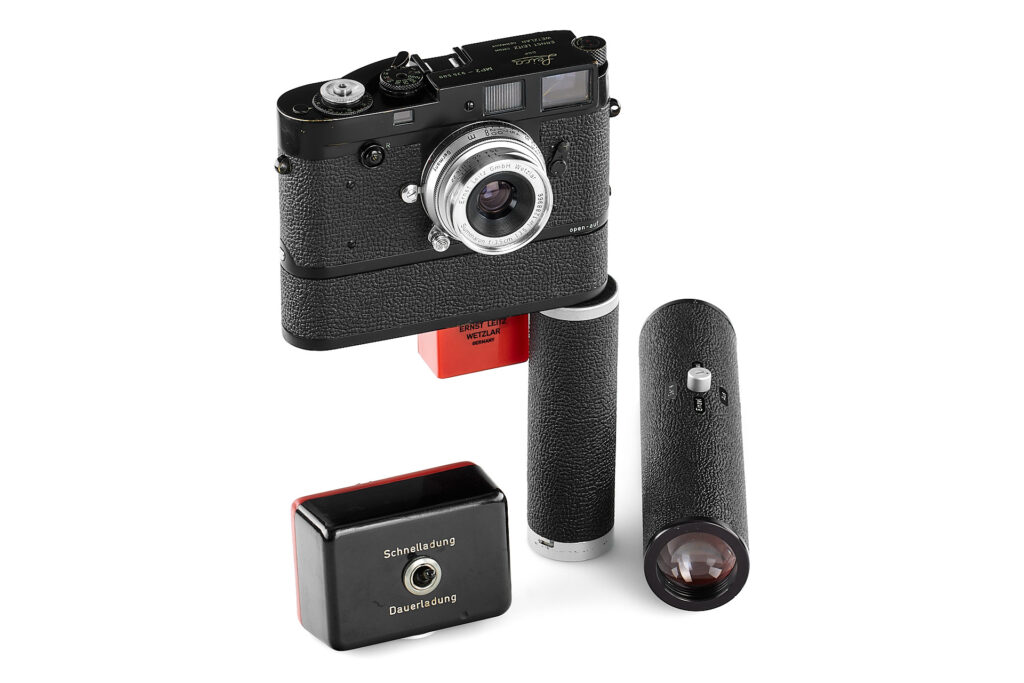
Vintage Leica whopping prices
The merest mention of the magic words, “black paint” is enough to get vintage Leica collectors all of a flutter. And there was more than a flutter at the Leitz Photographica Auction in Wetzlar on June 8. A black-paint Leica MP2, one of only 27 cameras from a late 1950s test series, attracted a bit of €1,560,000, well above expectations.
Last month, our William Fagan gave us an advance glimpse of the auction. He chose his ten favourite items, not necessarily the most valuable or popular. The MP2 was, however, well up on his list. He reported at the time that it had a starting price of €400,000 and an estimated sale price of up to €800,000. He couldn’t have foreseen an actual price of nearly double that amount.
Want to contribute an article to Macfilos? It’s easy. Just click the “Write for Us” button. We’ll help with the writing and guide you through the process.


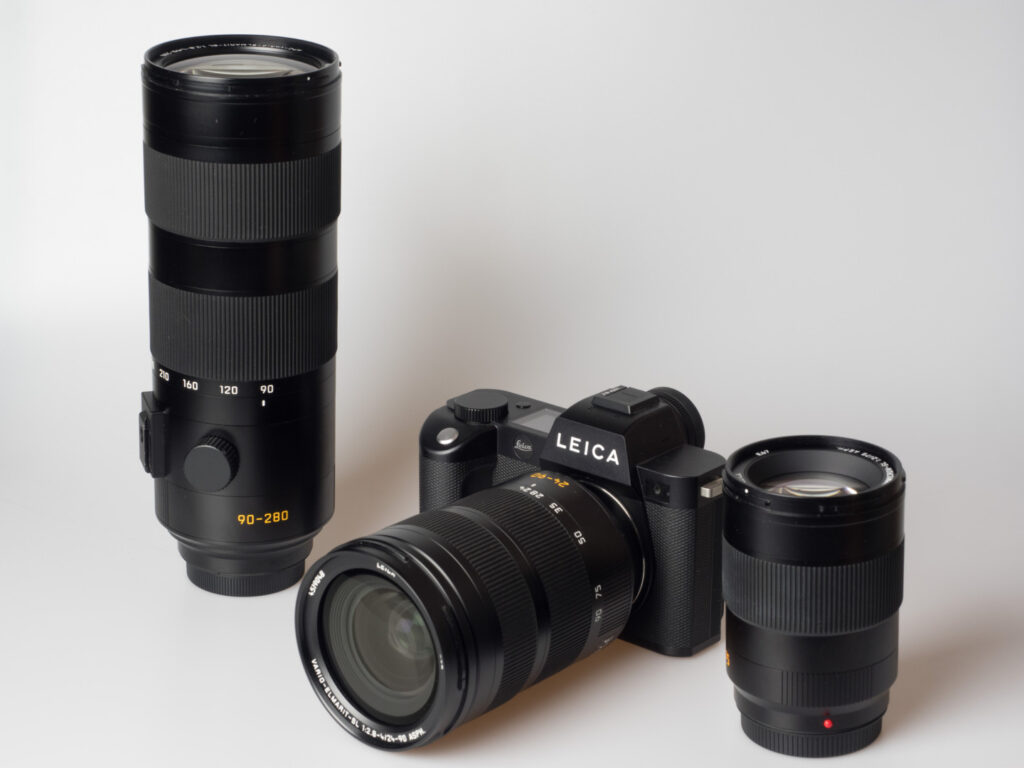
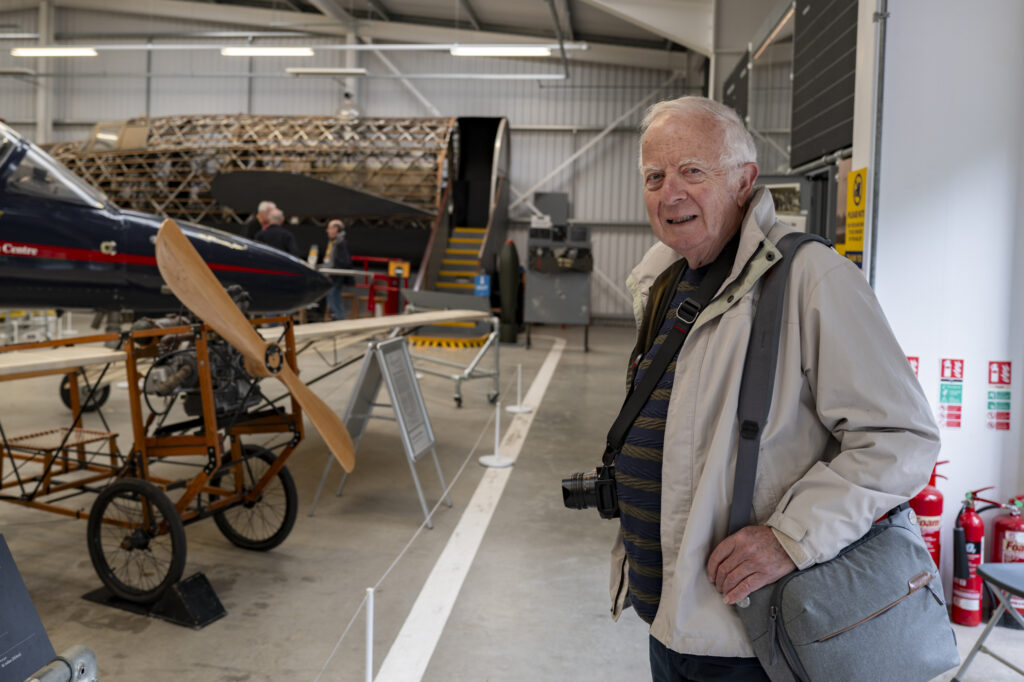

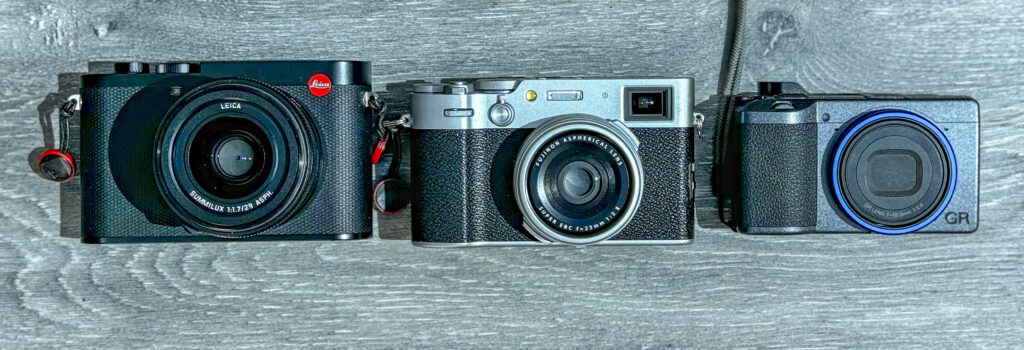
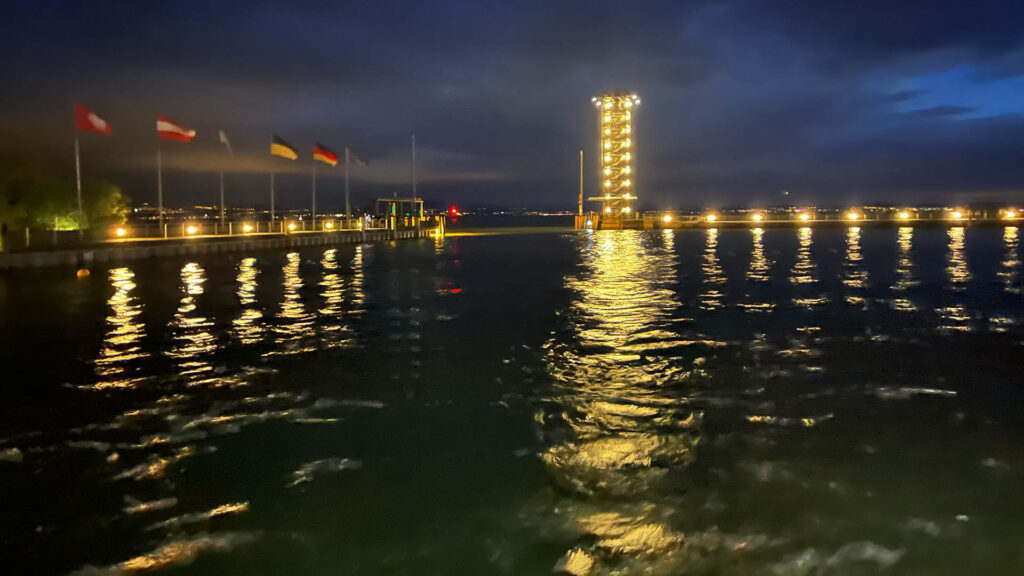
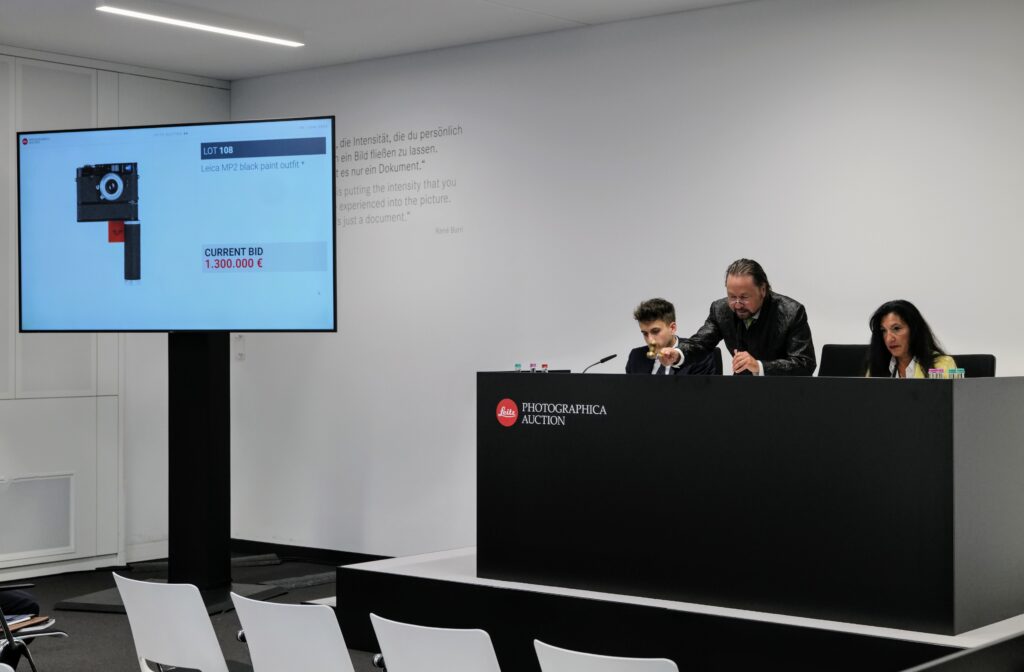




Hello
@jono I would love to read your thoughts. So yes please to an article.
Ever since I sold my Em1x I feel like I need to go back to an OM something!
Thank you
am
Interesting stuff – for me the only reason for shooting film would be to have an analogue workflow (darkroom), even scanning seems to be a way of getting a poorer digital file!
As for Micro Four Thirds, i have arriving today an OM-1 mark ii, the 12-100, the 90 f3.5 macro and the 20mm f1.4. I will also get one of the telephotos – either the 100-400 or the 150-400. I’ve had an on/off love affair with Olympus ever since the E10 way back when and it will be interesting to give it a proper test.
I’m not planning to get out of the SL kit just yet, but I’m intrigued by OM Systems embracing computational photography and taking advantage of the high speed processor and stacked sensor. Focus Stacking, Handheld High Res, Graduated ND filters all seem very exciting – and the 2X lifesize 90mm macro looks like a lot of fun.
I’m following in Brian’s footsteps!
All the best
Jono
Oh dear. Now you’ve set me a’wondering. This could be expensive. But meanwhile I have the D-Lux 8 coming in a week or so.
Hi There Mike
I’ll report back later! My current problem is trying to decide which telephoto to get.
It looks like a lot of fun though!.
I’ve been in and out of m43 like a Whitehall farce — in one door and out of the other before I’ve had time to press the shutter. Your update will be welcome, if dangerous for my state of mind and my credit card.
I’m no different Mike – ever since the E10 – I got one when it came out in 2000, and was on the very first page of the Olympus forum on dPreview talking about it. . . . lovely camera.
I’ve been reading a lot about the computational stuff on the OM-1 and it sounds really clever (and useful). I’m determined to master it this time!
Might be worth an article when I’ve absorbed what it’ll do.
The (old-ish) 100-300 – even though it doesn’t seem like much of a range – is a great lens ..or the two I’ve had are/were (I gave one away to another deserving photographer).
It’s lightweight for what it is (plastic body), focuses fast, with very sharp glass.
Just a thought..
Hi David
I used to own that lens, and it is sharp and good . . . . but
I’d rather have one which combines it’s OIS with the camera’s, which means using one of the Olympus lenses, might as well take advantage of the strengths of the camera. Basically the 150-600 or the 150-400 – I was amazed that the 90 macro was tracking march harriers unerringly this morning!
Mike,
I think this will be an interesting test that may help me decide whether to keep my 109 or buy a DL-8
Great to see John Shingleton at Brooklands. I hope he enjoyed his visit ‘back home’.
As for the auction, that MP2 fetched a high price because of the prototype motor drive rather than the black paint. I bought two items at the auction. Firstly, a I Model C Non Standardised which had been converted from an early 4 digit Leica I Model A. It has a 50mm Elmar with a number matching the last 3 numbers of the camera SN. It has had the original 33mm mount altered to a nonstandard 39mm. Anyone who has seen my YouTube video on Early Leicas with British Lenses and Conversions will know my interest in such details, conversions and variations.
In respect of my second purchase, I must admit to a misdescription in my article. I described the French ‘Ninet’ Petzval lens as being a ‘little beauty’ but, having purchased the thing, I find that it is 7 inches long with a lens cap that is 4 inches wide and, being made of brass, the whole thing weighs accordingly. It is engraved ‘Ninet’, but it is made to a Claude Berthiot of Paris design, which probably means that he was the maker. In the 19th Century Wood and Brass camera era, a lot of items used in camera/lens manufacture were made by third parties. Sounds a bit like today. The French lens has now joined my Grubb lenses which were made in Dublin rather than Paris.
My article about Leitz and the famous 1924 decision to make the camera, that became known as the Leica, was well received by the likes of Jim Lager, Lars Netopil, Leitz Auction and Stefan Daniel. JP Rau has translated the article into German for the ‘messsucherwelt’ website, which is appropriate as the 1924 meeting would have been conducted entirely in German. Thanks, JP.
William
You’re welcome, William. It’s great that the German speaking readers now have also access to your excellent article. And as you say, it is small part of the history of this country. What I hope for is that industry leaders will continue to make courageous, fast and unconventional decisions. All the best, JP
Hi, great article. I have moved from Medium format Hasselblad X1D system to Leica SL2/SL2-S full frame system, to m43 OM Mark 2 system and am not regretting it. Surprisingly, it has increased my love of photography; I love the compactness of the glass and enjoy the rendering of my camera. M43 is alive and well in spite of years of the naysayers.
Hi Brian
I’m following in your footsteps – my OM-1ii arrives today! (although not getting out of the SL)
all the best
Jono
Regarding negatives when I have a film processed I buy scans and have the negatives returned. The scans are useful now but the negatives will last for decades. They are the reason I use film. Spending all that money for a scan with a ‘film look’ I think is a waste but it’s the purchaser’s choice I suppose. The record of my life, my family and friends is in albums and files of negatives not on a hard drive, iPhone or a server somewhere.